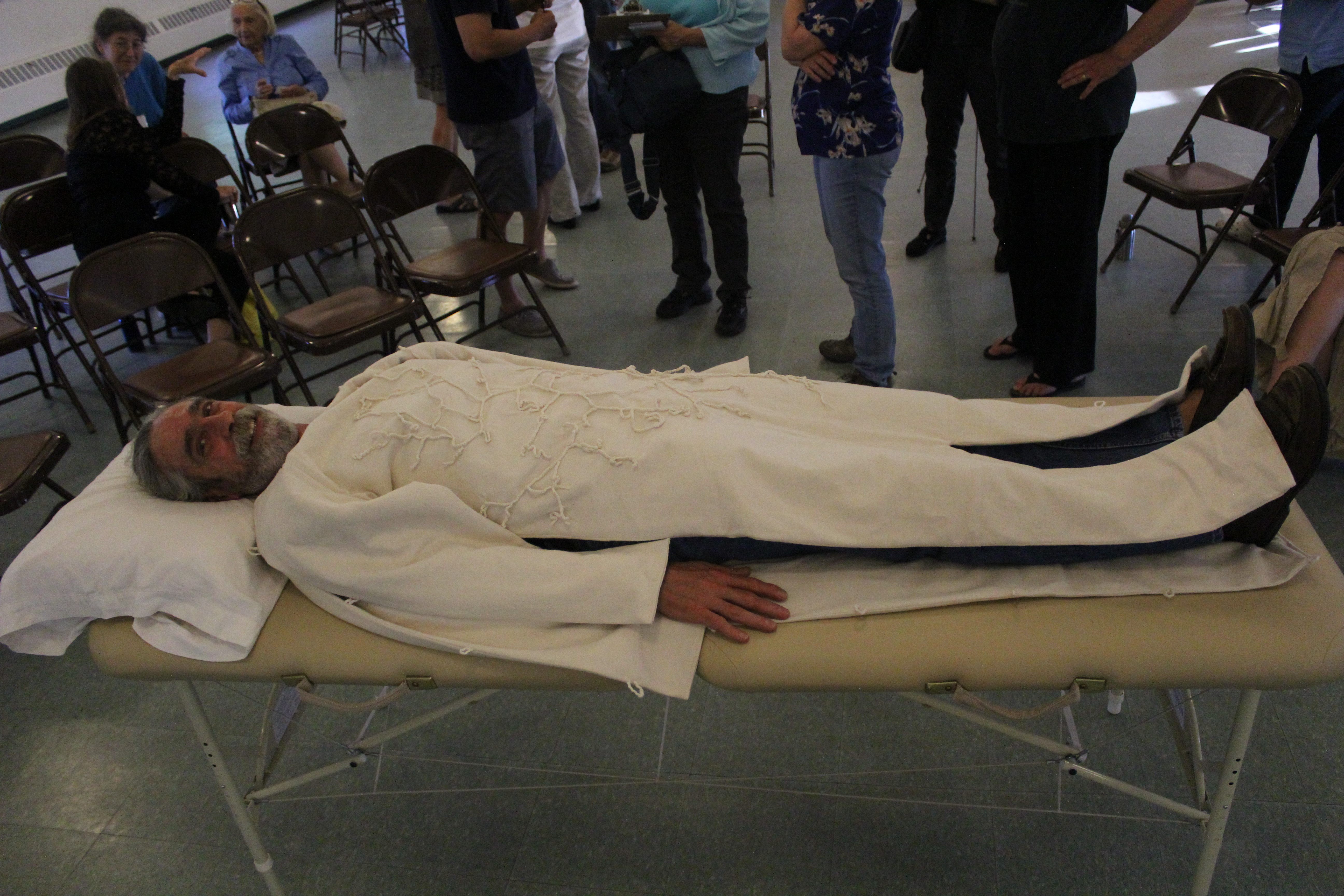The Mushroom Death Suit is the Latest in Post-Mortem, Eco-Friendly Fashion

The Infinity Burial Suit, or Mushroom Death Suit, contains mushroom spores that will grow from your body once you have been buried. (Photo: James Patten)
Just when you thought you had a handle on all the intricacies of modern, eco-friendly burials, a new post-mortem option has emerged. After creating a stir when it was announced five years ago, the Infinity Burial Suit, also known as the Mushroom Death Suit, is almost ready for real-world use.
The suit is embroidered with thread infused with mushroom spores that grow from the body after burial. These mushrooms digest the body as it decomposes and neutralize many of the environmental contaminants found in the body—including pesticides, preservatives, and heavy metals. In other words, wearing this suit will make mushrooms eat your body once it has been buried.
 Threads in the suit contain mushroom spores that will grow once the body begins to decompose. (Photo: James Patten)
Threads in the suit contain mushroom spores that will grow once the body begins to decompose. (Photo: James Patten)
Jae Rhim Lee and Mike Ma, co-founders of the Infinity Burial Suit, met at the Hassno Plattner Institute of Design at Stanford University. Lee conceptualized the idea of a burial method that would help reconnect our bodies with the earth. She came up with the idea of an “Infinity Mushroom,” a fungus which would be able to “eat” her body and neutralize its toxins once she died. To test it out, she began “feeding” a group of mushrooms her hair, skin, and nails, and selected the ones that were able to best decompose them.

Dennis White, a 63-year-old man who has Primary Progressive Aphasia, wears a recent prototype of the suit. (Photo: Jae Rhim Lee/COEIO)
“We are both responsible for, and victims of, our own pollution,” Lee said in a 2011 TED talk on the Mushroom Death Suit. As a way of handling some of this responsibility, the suit would prevent the toxins in the human body from being released into the environment after death. It would preclude the use of formaldehyde, which is used in many American funerals as a preservative in order to slow the decomposition process. The suit is also intended to help deliver nutrients to plant roots more quickly and efficiently.
The first user of the Mushroom Death Suit will be Dennis White, a 63-year-old suffering from a neurodegenerative disease called Primary Progressive Aphasia. Following his diagnosis, White was told that his disease would lead to Frontotemporal Dementia and his eventual death. He discovered the Infinity Burial Project and reached out to Lee in the hopes that he would be able to make his death a greener process.
“Dennis writing to me happened at a time when I was really thinking, ‘Okay, how do I get this out into the world?’,” says Lee in a documentary about Dennis’ story that was released earlier this year. The film follows Dennis as he plans for his green funeral, from getting measured for the mushroom suit to writing his obituary.

What the suit will look like in action. (Photo: Jae Rhim Lee/COEIO)
The Infinity Burial Suit is available in pod form for animal burials as well, and it is these pods that are set to launch next month. The human version will become available as early as April or May of 2016. The suit already has a waiting list, which is “in the hundreds,” according to co-founder Mike Ma. People are interested in the suit because they want to “exert their own agency beyond what the traditional funeral industry currently offers,” Ma says.
“Some have very strong environmental views and [to them] the thought of embalming’s toxins or cremation’s energy use is crazy.” Others are interested in finding a more economical alternative to the traditional funeral. Such people, says Ma, are “looking for ways to connect with their family by making their world views and ideas known through their own death.”












Follow us on Twitter to get the latest on the world's hidden wonders.
Like us on Facebook to get the latest on the world's hidden wonders.
Follow us on Twitter Like us on Facebook